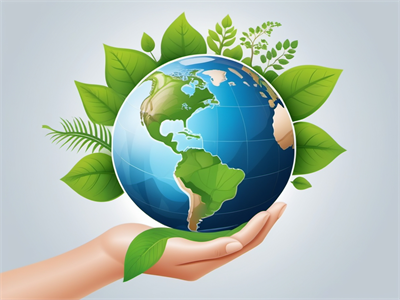Contact Us

Contact Us


Guangzhou Huaisheng Packaging Co.,Ltd.
We provide customers with quality products and provide high-quality services.
If you would like to leave us a comment please go to contact us
+86-18122240089

In an era where sustainability is not just a buzzword but a business imperative, Environmental, Social, and Governance (ESG) principles have become critical factors in corporate decision-making.
This concept was first proposed by Goldman Sachs in a report in 2006, aiming to integrate environmental and social factors with corporate governance factors that are of higher concern to investors. Since then, international organizations and investment institutions have continued to follow up, and the ESG concept has been deepened, and comprehensive and systematic assessment methods and information disclosure standards have been designed, becoming a globally recognized and respected investment concept.
Packaging, often the first touchpoint between a product and its consumer, plays a significant role in reflecting a company's commitment to these principles. As we peel back the layers, the relationship between ESG and packaging reveals a complex, yet promising, landscape of innovation, challenge, and opportunity.

The environmental dimension of packaging cannot be overstated. With millions of tons of packaging waste ending up in landfills and oceans annually, the need for sustainable solutions is urgent. The key lies in transitioning to recyclable, biodegradable, or compostable materials.
For instance, plant-based plastics and biodegradable foams are gaining traction as alternatives to traditional petroleum-based packaging. Notable examples include mushroom-based packaging material, which decomposes naturally without leaving harmful residues, and ocean plastics that are repurposed into new packaging, thus tackling waste and pollution.
At the same time, packaging design also needs to take into account energy conservation and emission reduction, such as adopting lightweight design and reducing unnecessary packaging.
Packaging decisions extend beyond environmental concerns and touch on social aspects as well. The inclusivity of packaging design ensures that products are accessible to all individuals, including those with disabilities.
Moreover, the social impact of packaging material choices, such as the use of ethically sourced materials, can influence consumer perception and brand loyalty. Socially conscious packaging initiatives, like those providing educational messages or supporting social causes, can strengthen community ties and enhance the brand's social footprint.
Governance about packaging involves a complex web of regulations that aim to ensure companies adhere to sustainable practices. From the European Union's directive on single-use plastics to statewide initiatives like California's Rigid Plastic Packaging Container (RPPC) program, regulations are pushing companies towards more sustainable packaging options. Good corporate governance is also about transparency and accountability in sourcing, manufacturing, and disposing of packaging materials, which can build trust with consumers and investors alike.
Sustainable packaging is not just a cost to be managed but an investment in a brand's future. A growing body of research suggests that consumers are willing to pay a premium for sustainably packaged products.
Moreover, companies that adopt ESG-aligned packaging can see benefits in the form of reduced material costs, improved brand image, and increased market share. Forward-thinking companies are leveraging sustainable packaging as a competitive advantage, driving innovation, and capturing value in a circular economy.
Despite the clear benefits, the road to sustainable packaging is fraught with challenges. Technological advancements are needed to create materials that meet the functional requirements of traditional packaging while being environmentally friendly. The higher upfront costs of sustainable materials can be a barrier for some businesses. However, the opportunities for innovation are vast, with potential breakthroughs in material science, supply chain logistics, and product design waiting to be discovered.
The intersection of ESG principles and packaging is a critical frontier in the quest for a sustainable future. Companies that embrace this nexus are poised to lead the way, setting new standards for environmental stewardship, social responsibility, and corporate governance. The call to action is clear: it's time for all stakeholders in the packaging supply chain to collaborate and innovate towards a future where our packages do more than just contain; they convey a commitment to a greener, more equitable world.
